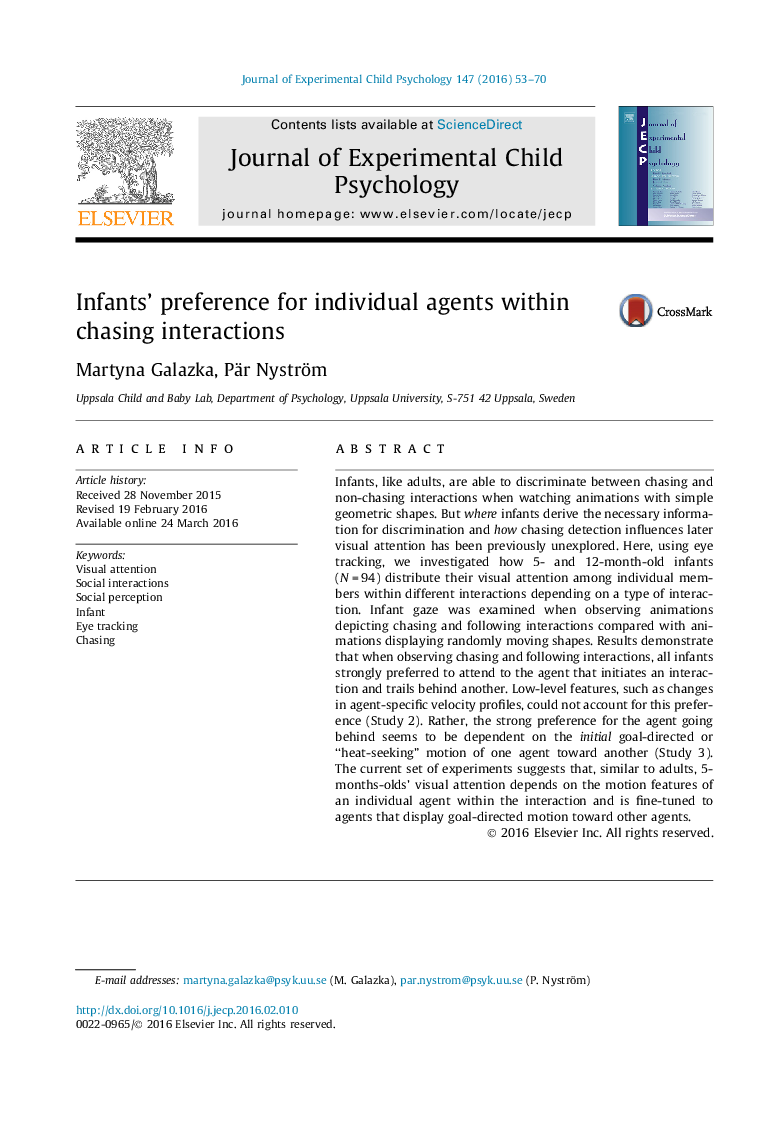| Article ID | Journal | Published Year | Pages | File Type |
|---|---|---|---|---|
| 917895 | Journal of Experimental Child Psychology | 2016 | 18 Pages |
•In an eye-tracking study, we examined differential looking at members within related and unrelated motions.•When observing moving geometrical shapes, 12- and 5-month-old infants prefer to attend to the interacting agents.•Specifically, they attend to the agent that initiates the interaction and trails behind another.•These findings supplement current findings in adults by demonstrating early attentional preconditions to social learning.
Infants, like adults, are able to discriminate between chasing and non-chasing interactions when watching animations with simple geometric shapes. But where infants derive the necessary information for discrimination and how chasing detection influences later visual attention has been previously unexplored. Here, using eye tracking, we investigated how 5- and 12-month-old infants (N = 94) distribute their visual attention among individual members within different interactions depending on a type of interaction. Infant gaze was examined when observing animations depicting chasing and following interactions compared with animations displaying randomly moving shapes. Results demonstrate that when observing chasing and following interactions, all infants strongly preferred to attend to the agent that initiates an interaction and trails behind another. Low-level features, such as changes in agent-specific velocity profiles, could not account for this preference (Study 2). Rather, the strong preference for the agent going behind seems to be dependent on the initial goal-directed or “heat-seeking” motion of one agent toward another (Study 3). The current set of experiments suggests that, similar to adults, 5-months-olds’ visual attention depends on the motion features of an individual agent within the interaction and is fine-tuned to agents that display goal-directed motion toward other agents.
